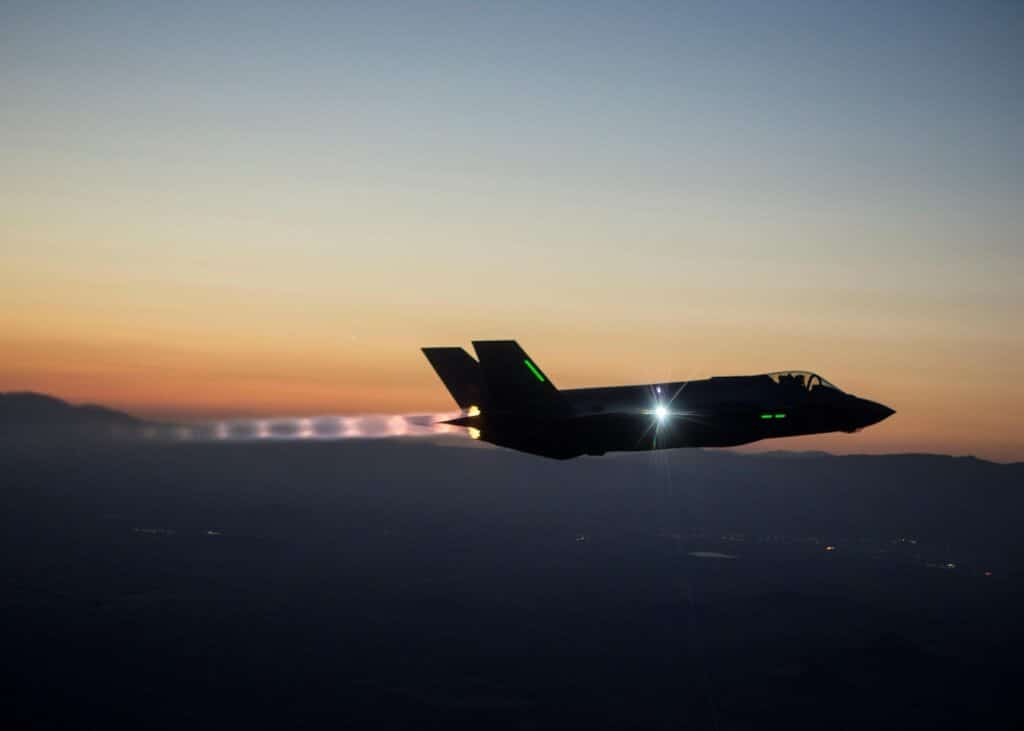How China’s J-20 Stealth Fighter Stacks Up Against the USAF’s Best
China’s Chengdu J-20 single-seat, dual-engine stealth fighter jet is the first Chinese fighter jet that qualifies as “state of the art” by Western standards, and it has been officially deployed by the People’s Liberation Army Air Force to forward bases.
Technically speaking, the J-20 isn’t a fighter — an aircraft designed to achieve air superiority by winning fighter-to-fighter combat — but an interceptor and strike aircraft. Interceptors are a class of aircraft that are specifically designed to attack enemy aircraft, particularly approaching bombers and reconnaissance aircraft. Strike aircraft are designed specifically for air-to-ground attacks rather than air-to-air combat with fighter jets like the F-35.
That said, the J-20 has long range missiles, advanced radars, jammers, and infrared sensors, not to mention a longer range, more internal fuel capacity, and larger internal weapons capability than the F-35. That said, many specifics of the new weapon remain unknown. No other nation but China will field the J-20, and its technology is a closely guarded secret.
This is in stark contrast to the F-35, which has been scooped up abroad and added to friendly nations’ air fleets. Israel has already ordered 33 for a cool $5.5 billion, and plan to increase the number of planes to 50. Most NATO allies are also looking to purchase the F-35 or one of its variants.
How does the F-35 compare?
The F-35 is a single-seat, single-engine, multi-role fighter stealth fighter jet that has been described as not an airplane, but three airplanes. F-35 pilots have described the difference between an F-35 and an F-15 as being similar to the difference between an iPhone and a corded wall phone. With final software upgrades still forthcoming, even those in the U.S. military aren’t sure about 50 to 80 percent about what the F-35 is capable of. In terms of conventional advancements — weapons payload, range, or dogfighting ability — the F-35 doesn’t have any of note. It’s truly a weapon designed to win the next war, not the previous one.
War Games: How the F-35 Would Defeat the J-20
In Fifth Generation Air Combat: Maintaining the Joint Force Advantage, a report recently written by an U.S. Air Force Major General and Colonel, the authors present how the F-35 would fare against an unnamed enemy (China) in a hypothetical war in 2026. The F-35s would have a distinctive edge over the J-20s in a dogfight, though the J-20’s long range missiles are specifically designed to take out “high value targets,” AKA F-35s, from a safe range. The J-20 would be more suited to harassing airborne early-warning and control systems and refueling aircraft that are supporting the F-35s, denying the F-35s the ability to reach their target. To counteract this, the F-35s would be forward positioned at bases across the Pacific and in Australia, who have their own fleet of F-35s, to eliminate the need for refueling. The F-35s primary job would be to eliminate air defenses and radar stations while fending off enemy fighters to the point where fleets of legacy fighters (F-16s, F-18s, and F-15s) could come in and finish the job.
We would include a video of the J-20, but the program is wrapped in such secrecy that the only video available is poor quality, grainy and not very entertaining. Nonetheless, if you would like to check it out, here it is!
High Strength, Close Tolerance Aerospace Fasteners from AMI
Aerospace Manufacturing creates close-tolerance, high-quality aerospace and military fasteners, including screws, bolts, pins, and studs. We are AS9100 and ISO:9001 accredited and proudly manufacture Titanium bolts, Waspaloy bolts, H11 tool steel bolts, Inconel bolts, MP35N bolts and much more!
To start your order, search our extensive inventory or launch your Custom Quote.





